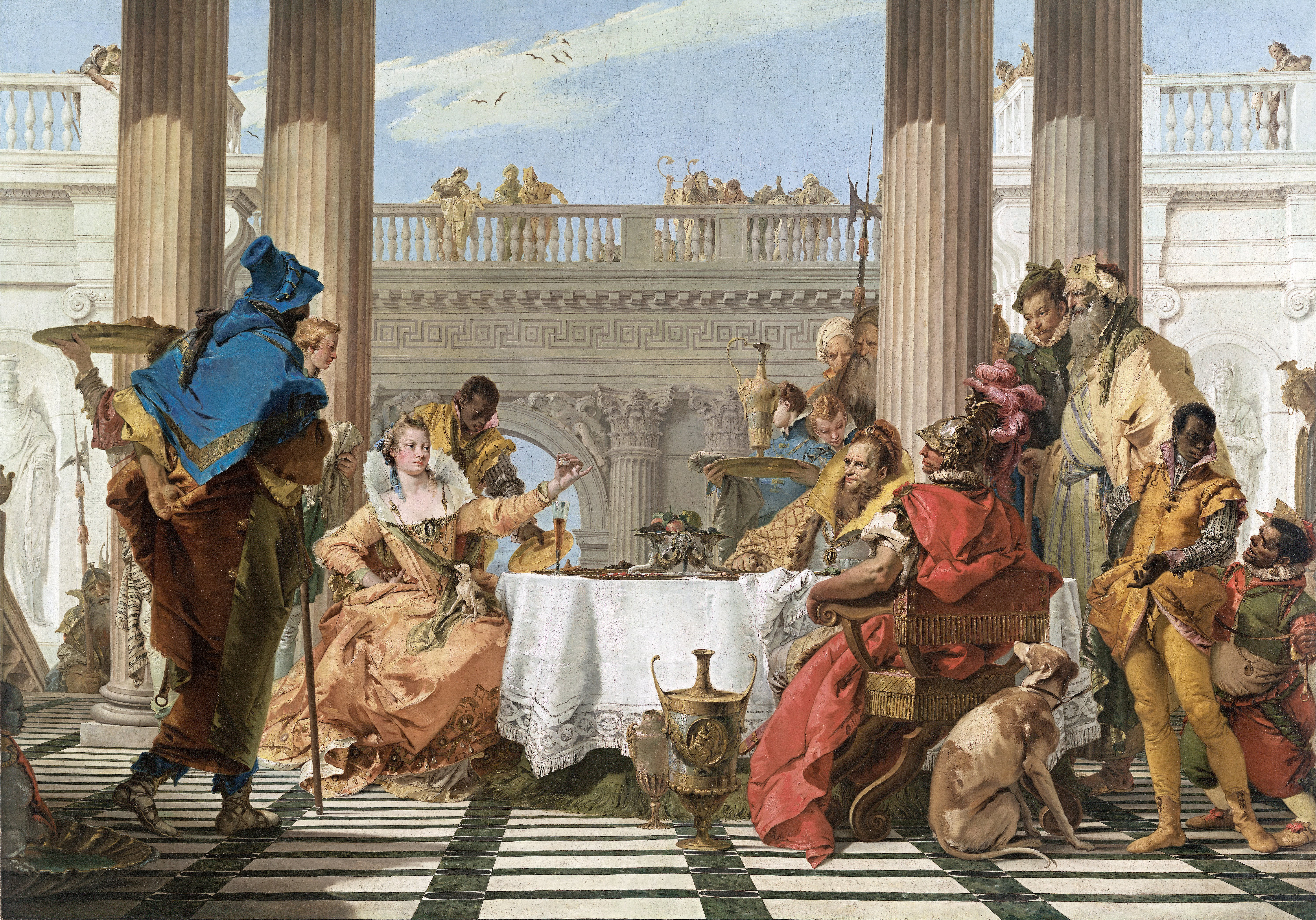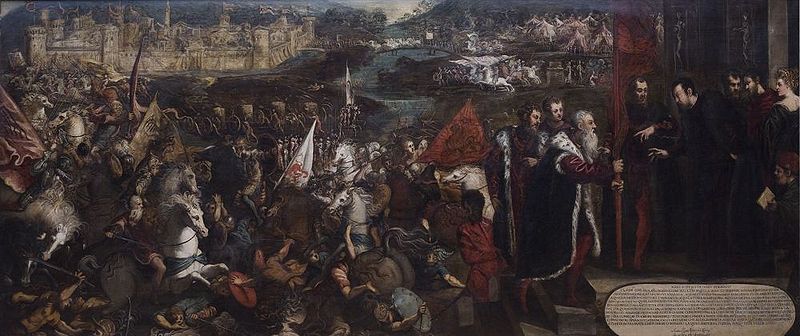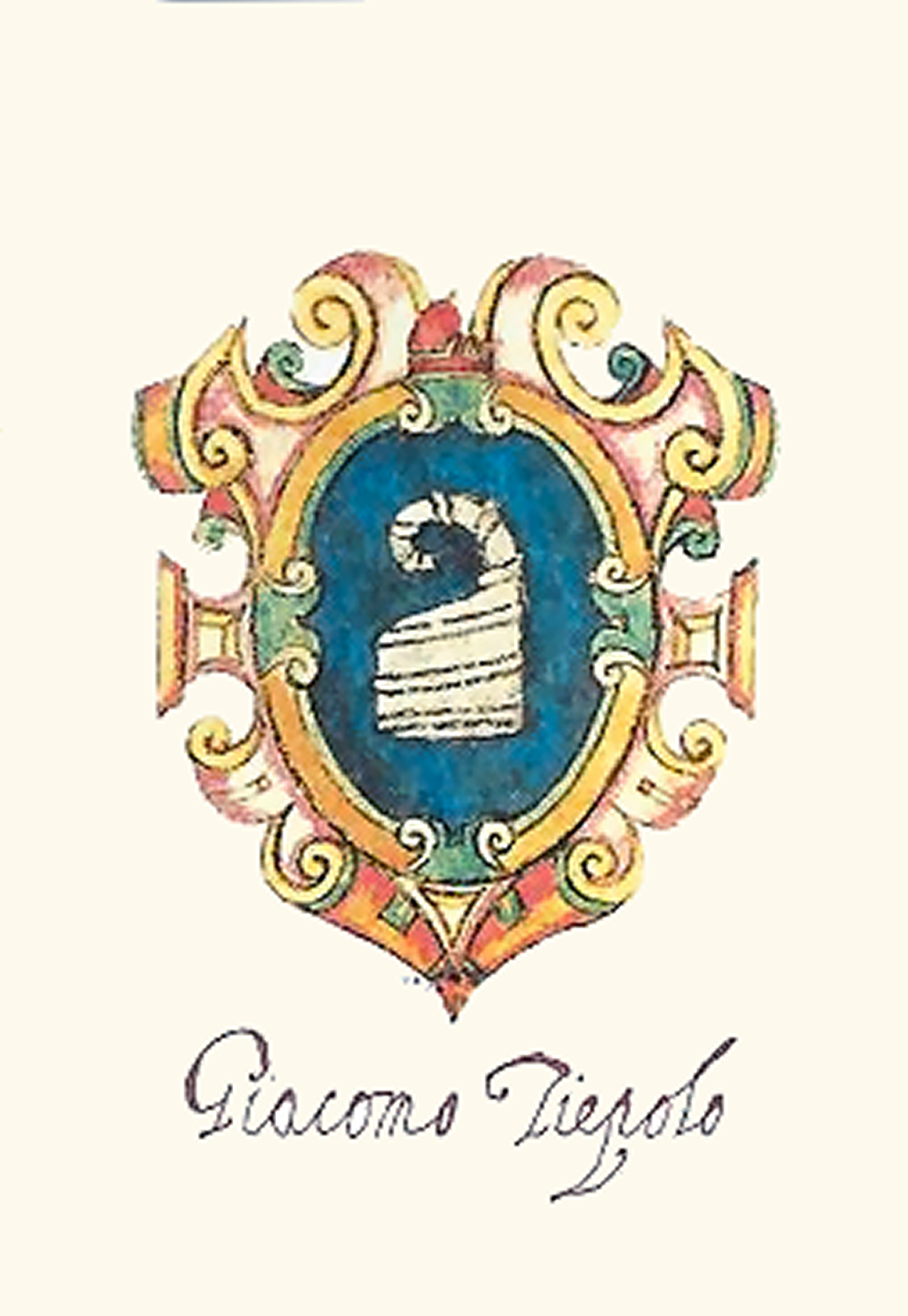|
Tiépolo
Giovanni Battista Tiepolo ( , ; 5 March 1696 – 27 March 1770), also known as Giambattista (or Gianbattista) Tiepolo, was an Italian painter and printmaker from the Republic of Venice who painted in the Rococo style, considered an important member of the 18th-century Venetian school. He was prolific, and worked not only in Italy, but also in Germany and Spain. Giovan Battista Tiepolo, together with Giambattista Pittoni, Canaletto, Giovan Battista Piazzetta, Giuseppe Maria Crespi, and Francesco Guardi are considered the traditional Old Masters of that period. Successful from the beginning of his career, he has been described by Michael Levey as "the greatest decorative painter of eighteenth-century Europe, as well as its most able craftsman." Biography ''The Glory of St. Dominic'', 1723 Early life (1696–1726) Born in Venice, he was the youngest of six children of Domenico and Orsetta Tiepolo. His father was a small shipping merchant who belonged to a family that ... [...More Info...] [...Related Items...] OR: [Wikipedia] [Google] [Baidu] |
Würzburg Residence
The Würzburg Residence (German: ''Würzburger Residenz'') is a palace in Würzburg, Germany. Johann Lukas von Hildebrandt and Maximilian von Welsch, representatives of the Austrian/Southern German Baroque style, were involved in the construction, as well as Robert de Cotte and Germain Boffrand, who were followers of the French style. Balthasar Neumann, court architect of the Bishop of Würzburg, was the principal architect of the Residence, which was commissioned by the Prince-Bishop of Würzburg Johann Philipp Franz von Schönborn and his brother Friedrich Carl von Schönborn in 1720, and completed in 1744. The Venetian painter Giovanni Battista Tiepolo, assisted by his son, Domenico, painted frescoes in the building. Interiors considered masterworks of Baroque/Rococo or Neoclassical architecture and art include the grand staircase, the chapel, and the Imperial Hall. The building was reportedly called the "largest parsonage in Europe" by Napoleon. It was heavily dama ... [...More Info...] [...Related Items...] OR: [Wikipedia] [Google] [Baidu] |
Michael Levey
Sir Michael Vincent Levey, LVO, FBA, FRSL (8 June 1927 – 28 December 2008) was a British art historian and was the director of the National Gallery from 1973 to 1986. Biography Levey was born in Wimbledon, London, and grew up in Leigh-on-Sea, Essex. He attended The Oratory School, a Catholic boarding school near Reading. He was called up for National Service in 1945 and served it largely in Egypt. After demobilisation in 1948, Levey went to Exeter College, Oxford, to read English; he graduated with first class honours after only two years' study. In 1951, Levey joined the National Gallery as assistant to the Keeper, Sir Martin Davies. He combined administrative duties with scholarly work, producing his first catalogue, on the Gallery's 18th-century Italian paintings, in 1956. In the 1960s, affordable art books with colour reproductions for the general reader began to appear, and Levey was commissioned to write an overview of Western painting for Thames & Hudson's ''World ... [...More Info...] [...Related Items...] OR: [Wikipedia] [Google] [Baidu] |
Tintoretto
Jacopo Robusti (late September or early October 1518Bernari and de Vecchi 1970, p. 83.31 May 1594), best known as Tintoretto ( ; , ), was an Italian Renaissance painter of the Venetian school. His contemporaries both admired and criticized the speed with which he painted, and the unprecedented boldness of his brushwork. For his phenomenal energy in painting he was termed . His work is characterised by his muscular figures, dramatic gestures and bold use of perspective, in the Mannerist style. Life The years of apprenticeship Tintoretto was born in Venice in 1518. His father, Battista, was a dyer – in Italian and in Venetian; hence the son got the nickname of Tintoretto, "little dyer", or "dyer's boy". Tintoretto is known to have had at least one sibling, a brother named Domenico, although an unreliable 17th-century account says his siblings numbered 22. The family was believed to have originated from Brescia, in Lombardy, then part of the Republic of Venice. Older studi ... [...More Info...] [...Related Items...] OR: [Wikipedia] [Google] [Baidu] |
Federico Bencovich
Federico Bencovich (; 1677 – 8 July 1753), also known as Federighetto or Ferighetto Dalmatino among others, was a Croatian-Italian late Baroque painter from Venetian Dalmatia. Although was among prominent painters of his era in North Italy, Germany and Austria, being a link between Venetian and Austrian Baroque, Bencovich's art was mostly rediscovered and valued only since the early 20th century. Origin Federico Bencovich (as he signed his own name) was born in 1677, but his exact birthplace is unknown, however usually is considered to have been somewhere in Venetian Dalmatia. It was considered as it could have been either in Omiš, Šibenik, the island of Brač, Dubrovnik, Verona or possibly Venice itself. According to information from early catalogs and notes on paintings, he was born in Venice to a Dalmatian father, in Verona (still considered of foreign origin), or Dubrovnik, but considered as a "Schiavone" and "Dalmatino". Given the information about his surname, and how ... [...More Info...] [...Related Items...] OR: [Wikipedia] [Google] [Baidu] |
Giovanni Battista Piazzetta
Giovanni Battista Piazzetta (also called Giambattista Piazzetta or Giambattista Valentino Piazzetta) (February 13, 1682 or 1683 – April 28, 1754) was an Italian Rococo painter of religious subjects and genre scenes. Biography Piazzetta was born in Venice, the son of a sculptor Giacomo Piazzetta, from whom he had early training in wood carving. Starting in 1697 he studied with the painter Antonio Molinari. By Piazzetta's account, he studied under Giuseppe Maria Crespi while living in Bologna in 1703–05, although there is no record by Crespi of formal tutelage. Thanks to Crespi, Carlo Cignani's influence reached Piazzetta. Piazzetta did find inspiration in Crespi's art, in which the chiaroscuro of Caravaggio was transformed into an idiom of graceful charm in his pictures of common folk. He was also greatly impressed by the altarpieces created by another Bolognese painter of a half-century earlier, Guercino. Around 1710, he returned to Venice. There he won recognition as ... [...More Info...] [...Related Items...] OR: [Wikipedia] [Google] [Baidu] |
Sebastiano Ricci
Sebastiano Ricci (1 August 165915 May 1734) was an Italian Baroque painter of the late Baroque period in Venetian painting. About the same age as Giovanni Battista Piazzetta, Piazzetta, and an elder contemporary of Giovanni Battista Tiepolo, Tiepolo, he represents a late version of the vigorous and luminous Pietro da Cortona, Cortonesque style of grand manner fresco painting. He was the uncle of Marco Ricci (1676 – 1730), who trained with him, and became an innovator in landscape painting. Early years He was born in Belluno, the son of Andreana and Livio Ricci. In 1671, he was apprenticed to Federico Cervelli of Venice. Others claim Ricci's first master was Sebastiano Mazzoni. Indiscretion at a young age in 1678 resulted in an unintended pregnancy and, later, a bigger scandal when Ricci was charged with trying to poison the young woman in question to avoid marriage. He was imprisoned, and released only after the intervention of a nobleman, probably a Pisani family member. He e ... [...More Info...] [...Related Items...] OR: [Wikipedia] [Google] [Baidu] |
Gregorio Lazzarini
Gregorio Lazzarini (1657 – 10 November 1730) was an Italians, Italian painter of mythological, religious and historical subjects, as well as portraits. One of the most successful Venetian artists of the day, a prominent teacher, and father to a significant school of painting, he is best known for having first trained Giambattista Tiepolo, who joined his workshop in 1710 at the age of fourteen. His own style was somewhat eclectic. Life Born in Venice, the son of a barber, he was the brother of the proficient painter, Elisabetta Lazzarini (1662–1729). He trained initially with the Genoa, Genovese painter Francesco Rosa, then with Girolamo Forabosco, and lastly in the studio of Pietro della Vecchia. He joined the painters' guild in Venice in 1687. Active in Venice until at least 1715, he spent most of his life in the Venetian Republic. He was a prolific painter. He was reputed to be a patient teacher who imparted a broad knowledge of artistic styles for the portrayal of mythol ... [...More Info...] [...Related Items...] OR: [Wikipedia] [Google] [Baidu] |
San Pietro Di Castello (church)
The Basilica di San Pietro di Castello (), commonly called San Pietro di Castello, is a Roman Catholic minor basilica of the Patriarch of Venice located in the Castello ''sestiere'' of the Italian city of Venice. The present building dates from the 16th century, but a church has stood on the site since at least the 7th century. From 1451 to 1807, it was the city's cathedral church, though hardly playing the usual dominant role of a cathedral, as it was overshadowed by the "state church" of San Marco and inconveniently located. During its history, the church has undergone a number of alterations and additions by some of Venice's most prominent architects. Andrea Palladio received his first commission in the city of Venice from the Patriarch Vincenzo Diedo to rebuild the facade and interior of St Pietro, but Diedo's death delayed the project. After St Mark's Basilica became Venice's official cathedral (it had previously been the private church of the Doge), San Pietro fell into ... [...More Info...] [...Related Items...] OR: [Wikipedia] [Google] [Baidu] |
Jacopo Tiepolo
Jacopo Tiepolo (shortly before 1170 – 19 July 1249), also known as Giacomo Tiepolo, was Doge of Venice from 1229 to 1249. He had previously served as the first Venetian Duke of Crete, and two terms as Podestà of Constantinople, twice as governor of Treviso, and three times as ambassador to the Holy See. His dogate was marked by major domestic reforms, including the codification of civil law and the establishment of the Venetian Senate, but also against a mounting conflict with Emperor Frederick II, which broke into open war from 1237 to 1245. Early life and career Jacopo Tiepolo was the son of Pietro Tiepolo of the San Ermagora parish in Venice. The identity of his mother is unknown, as is the date of his birth, but it was likely in the late 1160s. His family was engaged in trade, and Tiepolo himself is first attested in 1190, as a merchant trading with the Byzantine capital, Constantinople (modern day Istanbul) In 1196, he is even recorded as participating in a merchant ... [...More Info...] [...Related Items...] OR: [Wikipedia] [Google] [Baidu] |
Treccani
Institute Giovanni Treccani for the publication of the Italian Encyclopedia (), also known as Treccani Institute or simply Treccani, is a cultural institution of national interest, active in the publishing field, founded by Giovanni Treccani and Giovanni Gentile in 1925. It is known for publishing the first edition and the subsequent ten supplements of the ''Italian Encyclopaedia of Science, Literature and Arts'' (). History The Institute of the Italian Encyclopaedia was founded in Rome in 1925 by Giovanni Treccani, with the philosopher Giovanni Gentile as editor-in-chief. The first publication by the Institute was the ''Enciclopedia Italiana di Scienze, Lettere e Arti'' (). This encyclopaedia, best known as ''Enciclopedia Italiana'' or the ''Great Encyclopaedia'', is an Italian-language encyclopaedia and is regarded as one of the great encyclopaedias, being international in scope, alongside ''Encyclopædia Britannica'' and others. Since the 1990s, Treccani has been playing ... [...More Info...] [...Related Items...] OR: [Wikipedia] [Google] [Baidu] |
Oxford Art Online
Oxford Art Online is an Oxford University Press Oxford University Press (OUP) is the publishing house of the University of Oxford. It is the largest university press in the world. Its first book was printed in Oxford in 1478, with the Press officially granted the legal right to print books ... online gateway into art research, which was launched in 2008. It provides access to several online art reference works, including Grove Art Online (originally published in 1996 in a print version, ''The Dictionary of Art''), the online version of the '' Benezit Dictionary of Artists'', and ''The Oxford Companion to Western Art''. It also provides access to other Oxford art reference works, including the '' Encyclopedia of Aesthetics'' (2nd edition), and ''The Concise Oxford Dictionary of Art Terms''. The site was updated on 1 December 2017 to enhance page design, search tools, linking, and media capabilities. [...More Info...] [...Related Items...] OR: [Wikipedia] [Google] [Baidu] |
Grove Art Online
''Grove Art Online'' is the online edition of ''The Dictionary of Art'', often referred to as the ''Grove Dictionary of Art'', and part of Oxford Art Online, an internet gateway to online art reference publications of Oxford University Press, which also includes the online version of the ''Benezit Dictionary of Artists''. It is a large encyclopedia of art, previously a 34-volume printed encyclopedia first published by Grove in 1996 in art, 1996 and reprinted with minor corrections in 1998. A new edition was published in 2003 by Oxford University Press. Scope Written by 6,700 experts from around the world, its 32,600 pages cover over 45,000 topics about art, artists, art critics, art collectors, or anything else connected to the world of art. According to ''The New York Times Book Review'' it is the "most ambitious art-publishing venture of the late 20th century". Almost half the content covers non-Western subjects, and contributors hail from 120 countries. Topics range from Jul ... [...More Info...] [...Related Items...] OR: [Wikipedia] [Google] [Baidu] |








